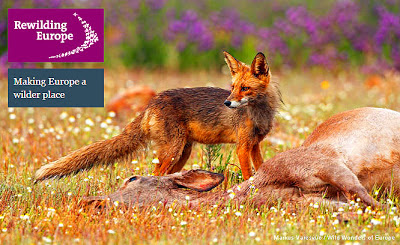 |
| Early morning fog at Mt. Crawford |
I have just completed a two week house
sitting gig in the Adelaide Hills, near the delightful hills town of Gumeracha.
To be more precise, the property was located at Mt. Crawford, and to be even
more precise, I was pet sitting rather than house sitting. I suspect the area
would have been isolated enough and safe enough for the owners of the property
to simply lock the house up and leave it for two weeks, but having a very
active and friendly house dog necessitated having someone live on site and care
for the canine, and since it was there―the house.
Not that I’m complaining.
Actually, I will complain now that I think of it. I woke up
most mornings bloody freezing (if I may be permitted to use the Great Australian
Adjective). While it is not quite the middle of winter right now in the
southern hemisphere, it has still been cold enough to freeze the you-know-whats
off a brass monkey. Especially at Mt. Crawford.
 |
| Alert coney grazing close to house |
Still, despite the cold nights and even colder
mornings, I did enjoy my brief bucolic rural idyll. Every morning the day was
sung in by a bevy of magpies and kookaburras which seemed to be competing
with each other over which species could make the most noise at 5:30 in the
morning!
By the way, as well as being referred to as a 'gulp' or
'murder' of magpies, the collective name for a group of magpies also includes
'A tiding' or 'charm' of magpies. Maybe this accounts for their early morning
carousing and carolling. There doesn’t appear to be a collective name for
kookaburras, so may I humbly submit ‘a comedy of kookaburras’ in honour of
their distinctive ‘laugh’?
If I got up early enough―I never did, of course―I might have
been lucky enough to see several rabbits gambolling about near the house. How
do I know there were rabbits gambolling about near the house? Because they also
liked to hop about just as dusk was approaching, as long as they couldn’t see
or hear either myself or the very active and friendly house dog.
 |
| A trio of kangaroos working their way across the lower paddock |
Along with the rabbits, the magpies, and the kookaburras,
early morning and early evening was the perfect time to observe a mob of
kangaroos as they slowly left the nearby forest and grazed in the property’s
lower paddock. Actually, the kangaroos left the relative safety of the forest
in the evening, and by mid morning they could be seen eating their way back towards the trees again. In
between their evening exit from the forest, and their morning re-entry into it,
they often spent the night working their way right up to house, grazing as they
went. This I knew from the many droppings they left behind, just metres from
the back patio.
I know there are deer roaming wild in the Mt. Crawford
forest, but only once did I observe several of these beautiful creatures leave
the forest one evening, and graze well away from the main house.
 |
| My bucolic country getaway. Early morning fog greets early morning sun. |
On a previous house sitting gig for the same owners, I was
lucky enough to see an echidna while out walking the dog late in the afternoon.
Australian echidnas (sometimes known as spiny anteaters), are small, solitary
mammals covered with coarse hair and spines that resemble the anteaters of
South America and other spiny mammals such as hedgehogs and porcupines. Unlike
hedgehogs and porcupines though, which give birth to live young, the echidna
(which is a mammal) lays an egg! According to
Wikipedia:
Echidnas and the platypus are the only egg-laying
mammals, known as monotremes. The female lays a single soft-shelled, leathery
egg 22 days after mating, and deposits it directly into her pouch. Hatching
takes place after 10 days; the young echidna then sucks milk from the pores of
the two milk patches (monotremes have no nipples) and remains in the pouch for
45 to 55 days, at which time it starts to develop spines. The mother digs a
nursery burrow and deposits the young, returning every five days to suckle it
until it is weaned at seven months.
Here endeth the lesson.
Now I am back in the cosy confines of my suburban retreat,
again close to shopping centres, cinema multiplexes, fast food franchises, and
within easy walking distance of cafés, coffee shops, and freshly baked muffins.
As good as it was to spend two weeks in a rural setting, I am happy to be back
in the burbs writing this. Don’t get me wrong, I am also more than happy to
return to Mt. Crawford to house sit again―but only when the weather is another
twenty degrees warmer.











